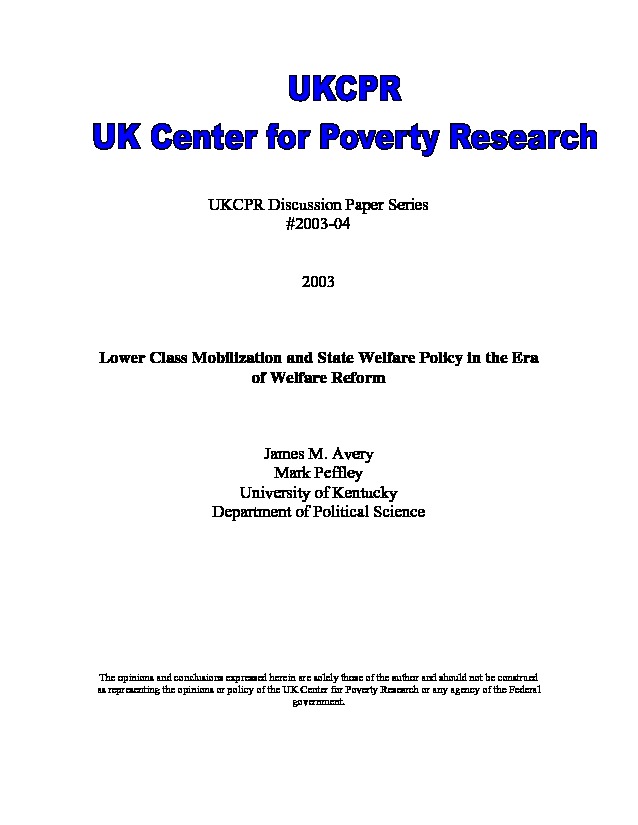The 1990s played host to the most significant changes in the American welfare system in the last 50 years— in particular, states were granted much wider latitude in deciding who is eligible to receive welfare. Taking advantage of these changes, we examine the linkage between lower class turnout and state adoption of restrictive welfare eligibility requirements after the passage of the historic welfare reform legislation of 1996. We find that in states where lower class turnout was relatively high, lawmakers were much less likely to pass a range of “get tough” welfare rules. Our findings provide novel support for the importance of electoral mobilization in helping the lower class achieve policies consistent with their interests. However, we also uncover evidence consistent with a “group threat” hypothesis in that states with larger lower class populations tended to adopt more restrictive welfare rules.
Research
Welfare ReformPDF Thumbnail
